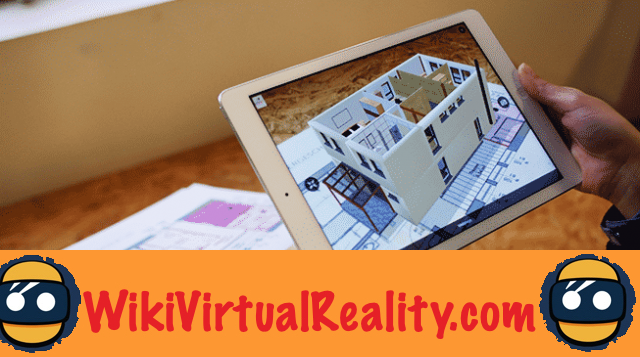
Summary
- Virtual and augmented reality in architecture and construction
- Very effective tools for off-plan sales
Virtual reality but also augmented reality are making a remarkable entry into the architectural professions but also those of construction. Explanations and advantages of these technologies.
Virtual reality, and more recently augmented reality, are not just tools intended exclusively for video games. Their applications are numerous, from medicine to complex maintenance in industry. These technologies are changing the practices of many professions such as, for example, those in the building industry. Here is how these new tools are disrupting practices that have changed little in recent years.

Virtual and augmented reality in architecture and construction
The arrival of computer-assisted drawing software, such as Autocad or SketchUp, years ago changed the profession of architecture from 2D hand-drawn plans to 3D plans represented in 2 dimensions on a computer screen. This made the work of the architects simpler and the rendering more spectacular, allowing to observe the plans of a construction from all angles.
Virtual and augmented reality offers an additional dimension by making it possible to visualize a building design idea directly in 3 dimensions, both the exterior and the interior and even to be able to move freely in this digital representation.
The advantages are major and allow a potential customer to visualize the final rendering. It is also a particularly effective tool in architecture and construction for risk prevention. This allows better decision making on the structure of the site by offering a more precise visualization. One of the other major benefits, in addition to an effective presentation, is increased productivity for professionals using these tools.

Very effective tools for off-plan sales
For architecture and construction, these tools also have a definite advantage in terms of off-plan sales. Manufacturers immediately saw the major potential brought by virtual reality and augmented reality to their potential customers during off-plan sales. Indeed, when a builder decides, for example, to build an apartment building or a housing estate, he must sell, on plans, the first departments or houses in order to obtain financing for the project from a bank.
It is often difficult for a potential client to correctly visualize how his future home will be from plans, even in 3 dimensions on a computer. Virtual reality allows customers to virtually immerse themselves in what may be the most important acquisition of their life. He will be able to move around in his future apartment or house, open the doors, drawers and realize the illumination of his stay. It is much more convincing than paper or computer plans ...
Some builders do not hesitate to use drones to take aerial shots of what the view will be from the future windows of the building if it has many floors, especially if the view is pleasant and sunny. part of one of the criteria for selling a building. The view of a landscape or the city is obviously not the same from the ground floor as from the twentieth floor of a building.


























